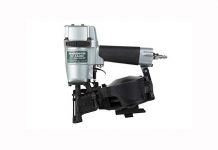Two recent studies show some workers are saving for retirement, after all
Two studies — one from Fidelity Investments and another from Bank of America Merrill Lynch — show employees may be taking advantage of their workplace retirement plans after all.
Retirement account balances, for 401(k) plans and individual retirement accounts, reached an all-time high for the third consecutive quarter, according to a Fidelity analysis of its retirement accounts, showing the average 401(k) balance was $97,700 and the average IRA balance was $100,200. Retirement savers with accounts from 10 years ago saw a record average of $266,100, up from $78,800 in the second quarter of 2007 — in which the market accounted for 53% of growth and employee contributions accounted for 47%.
“People are taking saving for retirement seriously,” said Meghan Murphy, a director at Fidelity Investments.
Bank of America’s study had similar results — the firm found there was a 6% increase in new enrollments, with 17% increase in plan assets and 20% increase in contributions. More employees are also using Roth 401(k) plans — Roth plans differ from traditional plans in that account contributions are made after-tax and then assets withdrawn down the road are tax-free.
More millennials (those ages 21 to 34) are making contributions than other generations (82%), but not by much — 77% of Gen X (those ages 35 to 49) are making contributions, followed by 75% of baby boomers (those ages 50 to 68), the study found. The generations, especially millennials, may be more engaged with their plans because of the easy digital tools now available, as well as the way employers are setting up these accounts, including automatic enrollment, said Sylvie Feist, director of financial guidance services at Bank of America Merrill Lynch. Almost half (49%) of plans had auto-enrollment, the Bank of America study found.
These studies are particularly notable because they come amid a backdrop of grim news about retirement preparedness in the U.S. One study from the U.S. Census Bureau found only a third of employees with access to a workplace retirement account are putting money in it, and that’s only if their employers offer such plans (which only 14% do, the study found). Some people don’t save anything at all, or if they do, they save very little, which is why the government recently decided to shut down myRA, a retirement savings program for people without access to an employer-sponsored plan.
Many studies have shown that the typical American couple only has a meager amount saved for retirement, or people may underestimate how long they’ll live, possibly dooming themselves to poverty in old age.
For those who haven’t yet started saving, or who have but haven’t contributed as much as they should, there’s no need to lose hope, Feist said. “It’s never too late to start saving, and you should take advantage of all the opportunities out there to catch up,” she said. Employees with access to a plan with an employer match should take advantage of it, Murphy said, as well as getting started as soon as they can. Other ways to save include using health savings accounts, which let employees put a pre-determined amount of money away, pre-tax, for medical expenses through the year. Americans older than 50 can make catch-up contributions in their 401(k) plans and IRAS (for 2017, 401(k) plan contribution limits are $18,000 with $6,000 catch-up contribution limit and IRA contribution limits are $5,500 with a $1,000 catch-up contribution). “There are a number of different ways people can save,” Feist said.


















